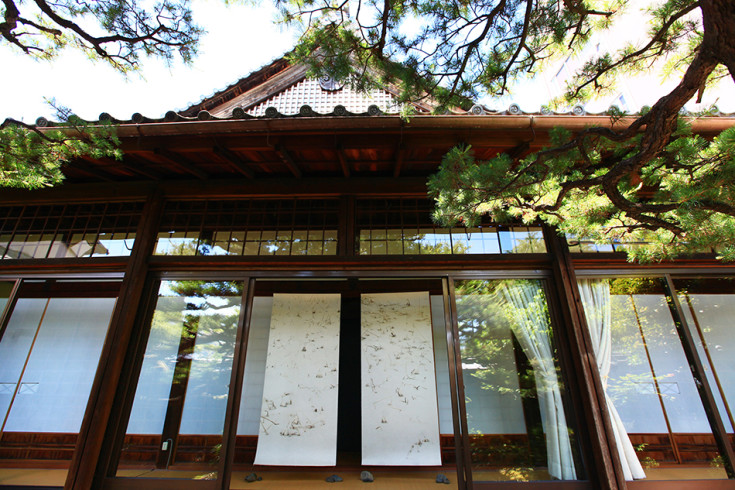
《シーズン•ラオ新作展 ー 氷蓮図》2019 May – Solo Exhibition – Zuisenji temple Kyoto, Japan
Solo Exhibition
Date : 5.7-5.10
City : Kyoto, Japan
Venue : 慈舟山 瑞泉寺
京都三条河原に面した瑞泉寺を訪ねたシーズン・ラオは、その後冬から覚めない東北を旅する。
そこで出会った凍った池に、静かに終焉を迎えようとしている蓮の姿。
氷が溶け春が訪れると、新しい芽吹きに花の蕾みは新たな生命の誕生。
作品中の凍って止まった蓮の息は風に揺られて息づき、新しい芽吹きや花の蕾が新たな生命の誕生を感じさせた。
作家が作品制作にあたって常に追い求める東洋哲学は、
作品のモチーフに用いられる白雪や雲が生み出す水墨画に見られる「間」。
それは、仏教の「死生観、再生、輪廻」に通じる。
今回の展示場所は河原町の近く、京都の賑わいのすぐそばにありながら、
普段は閉じている裏木戸からお墓を通り、白砂の枯山水の向こうに位置された場所。
ご縁がある方だけが気づき、静かな心で枯山水に立つ。
そこでは「氷蓮図」を通して仏教の世界観、東洋の精神性、
そして瑞泉寺の豊臣秀次一族の歴史に向き合うそれぞれの瞬間も、作品の一部となるのです。
瑞泉寺は、処刑された豊臣秀次公の一族を弔うために約400年前に建てられました。
芸術家シーズン・ラオがこの瑞泉寺を訪れ、その後の旅で導かれるように出会った光景、
それは凍った池の上で自然に還りゆく蓮の姿でした。仏教世界で生を表す象徴的な花である蓮。
彼は、一つの生を終えて再生へと向かう前に静寂に包まれる
この蓮の姿に、瑞泉寺の歴史とおもいに通じる精神世界を見出します。
本展では、彼が瑞泉寺に持ち帰った新作『氷蓮図』をご覧ください。
Installation at the Zuisen-Ji dry landscape garden.
Zuisen-Ji is located in the city center of Kyoto, and its dry landscape garden is normally not opened to the public.
The quiet garden is enclosed by the main hall and after opening the door there are stepping stones in nearly a straight line all the way across the garden. Water-basin stones and lantern sets carry the temple’s ancient past back into this garden. The bed of white sand invoked
the image of great ocean waves springing from a single drop of water. The sprouting ferns provided an extra touch green adding to this mini-universe. The refined atmosphere of a regal retreat wafted through the air.
Two 1.7m artworks were exhibited in the middle of the garden. With several small scenic stones at the base.
For the installation, Season Lao shifted the perspective. Normally Japanese people enjoy the dry landscape garden from the building and don’t stand on the sand. This time all the guests were allowed to walk across the rock garden. The lotus is very symbolic in Buddhism, bright and slowly moving by the wind. It also has the meaning of rebirth, Reincarnation for the new life. After visiting Zuisen-Ji Season Lao explored the scenery of Tohoku.
Origin of Zuisen-ji Temple
Toyotomi Hidetsugu (豊臣 秀次, 1568 ‒ July 15, 1595) was a daimyō during
the Sengoku period of Japan. He was the nephew and retainer of Toyotomi Hideyoshi, the unifier and ruler of Japan from 1590 to 1598. Despite being Hideyoshi’s closest adult, male relative, Hidetsugu was accused of atrocities and attempting to stage a coup after the birth of Hideyoshi’s son, and he was ordered to commit suicide. Hidetsugu’s entire family, including children,
were also executed on Hideyoshi’s orders.
More than ten years after that, the wealthy merchant Ryoi Sumi-no-kura,
who was engaged in excavating the Takasegawa canal, beside the Kamo River, happened to come across the mound. Then he built a temple dedicated to the repose of their souls.
Trackback from your site.







